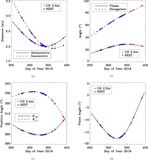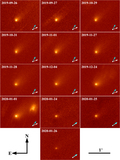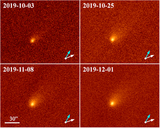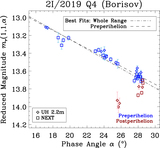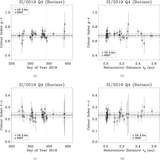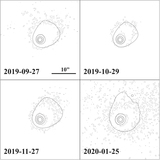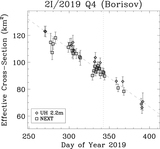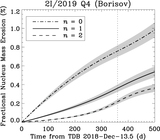Image Details
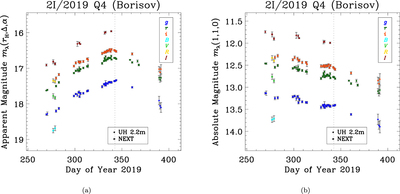
Caption: Figure 4.
The apparent (a) and intrinsic (b) light curves of interstellar comet 2I/2019 Q4 (Borisov) as functions of time during our observing campaign from the UH 2.2 m telescope (diamonds) and NEXT (squares). The reduction bands are color coded as indicated in the legend. Panel (b) was obtained by applying Equation (1) to normalize the apparent magnitude of the comet in panel (a) to ﹩{r}_{{\rm{H}}}={\rm{\Delta }}=1\,\mathrm{au}﹩ and α = 0°. Assuming that 2I has a phase function similar to those of solar system comets, and thereby approximated by the empirical Halley–Marcus function by Marcus (2007) and Schleicher & Bair (2011), we can note in panel (b) that its intrinsic brightness has been fading since our earliest observation from late September 2019. The vertical gray dotted line in each of the panels marks the perihelion epoch of the comet (tp = TDB 2019 December 8.6).
Copyright and Terms & Conditions
© 2020. The American Astronomical Society. All rights reserved.


